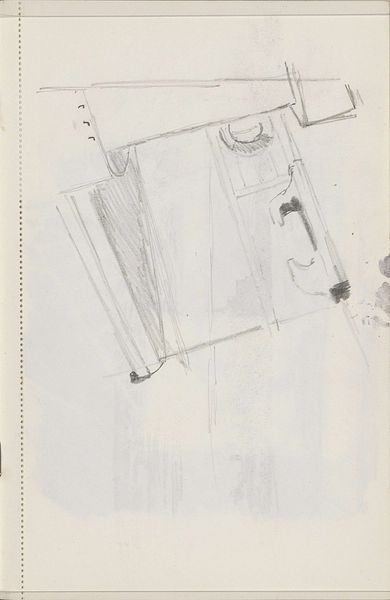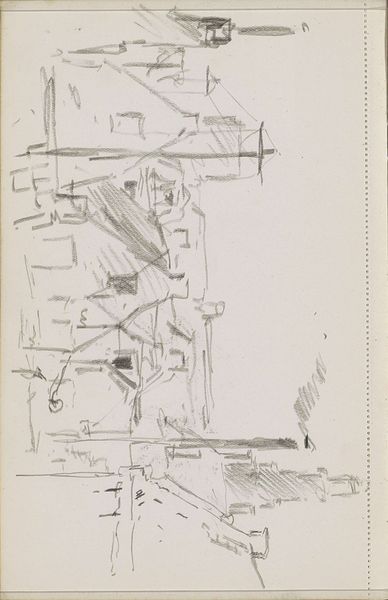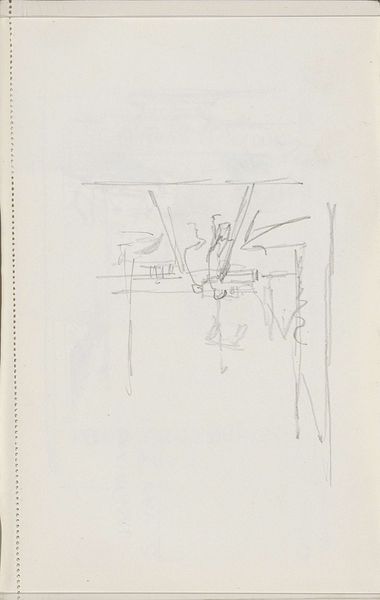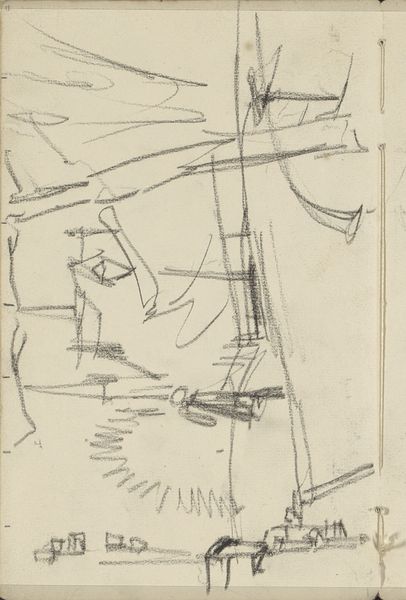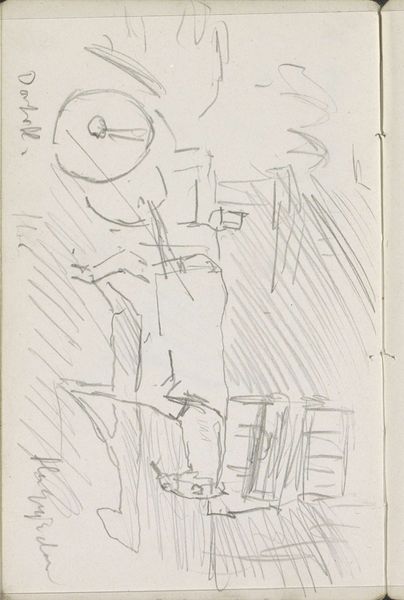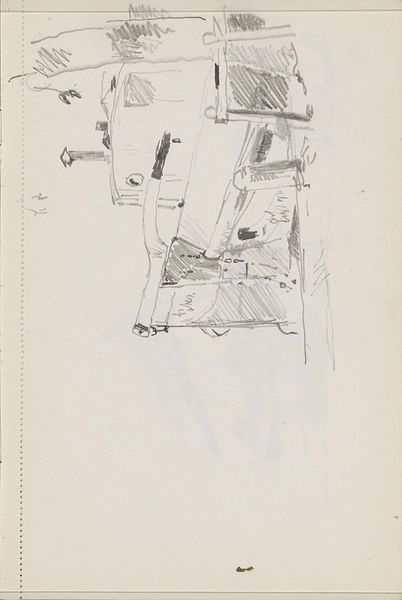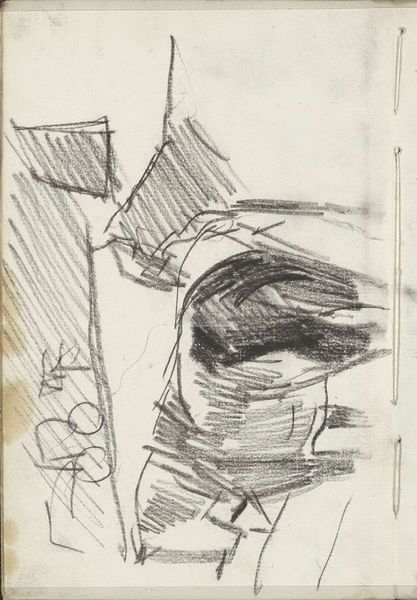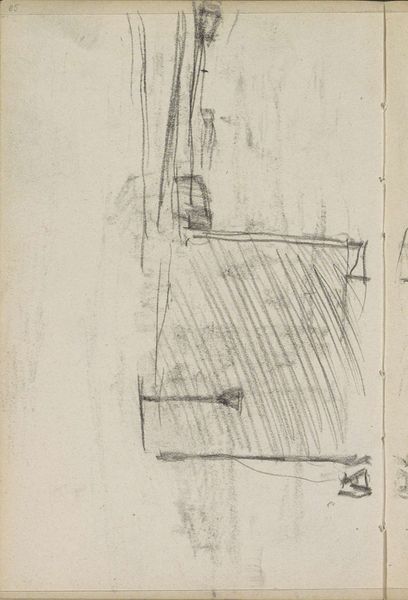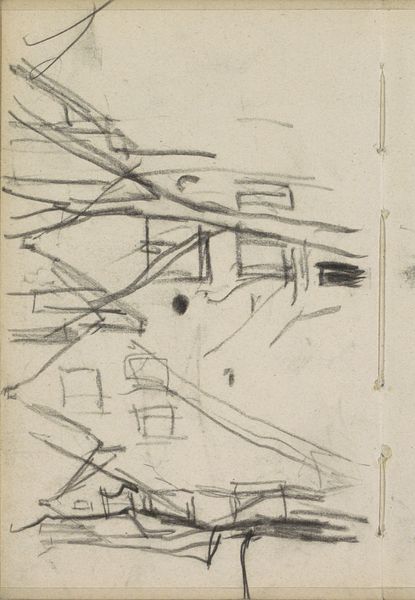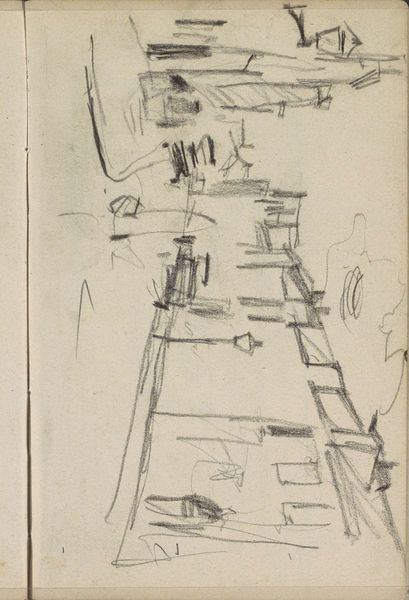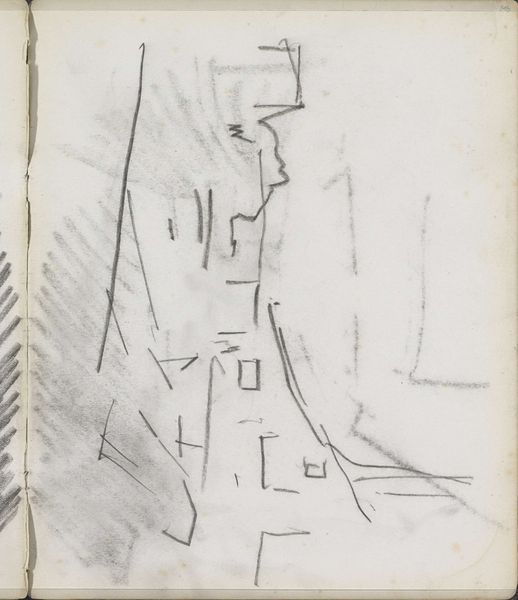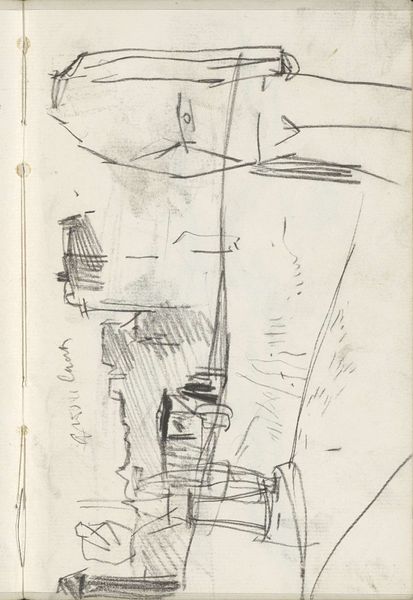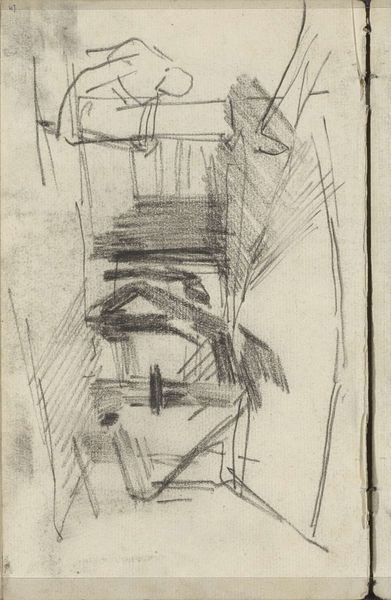
drawing, pencil
#
drawing
#
amateur sketch
#
quirky sketch
#
incomplete sketchy
#
personal sketchbook
#
idea generation sketch
#
sketchwork
#
geometric
#
sketch
#
pen-ink sketch
#
pencil
#
abstraction
#
sketchbook drawing
#
storyboard and sketchbook work
#
initial sketch
Copyright: Rijks Museum: Open Domain
Curator: My initial impression is this feels less like a finished drawing and more like a moment captured. Fleeting, almost. Editor: That’s an apt description. What we’re looking at is entitled "Dek van een schip", or "Deck of a Ship," created circa 1936 by Cornelis Vreedenburgh, presently held in the collection of the Rijksmuseum. The medium appears to be pencil on paper, giving it that raw, immediate quality. Curator: It definitely has that feeling of an artist's personal sketchbook – a place for jotting down ideas. You see geometric shapes suggesting structures, perhaps representing the ship's architecture. And those scribbled lines... there's a certain energy. But, what purpose did such on-the-spot recording serve back then, outside the artist’s intentions? Editor: In the early 20th century, with burgeoning industrialization and global travel, ships held immense symbolic weight – they represented exploration, trade, and connection, but they were also tools of colonialization and the seeds of the coming war. Capturing a ship’s deck could be Vreedenburgh's way of engaging with these powerful societal currents. Its incompleteness, almost abstraction, pushes this past representational art. Curator: Absolutely, but the abstraction makes it more compelling as symbol; each element signifies something larger. For instance, a geometric abstraction references order amidst chaos or an allusion to navigation, precision and the intersection of man and the unknown depths of the ocean. Editor: I’d like to add that the very act of sketching, rapidly rendering forms from observation, echoes a period invested in speed, industry, and modernity. By sharing these ‘ideas’, and especially an unfinished one, the viewers engage in a form of speculation – contributing themselves to the work’s legacy as cultural object. Curator: It reminds me that the visual language we use can both reflect and shape the culture in which we exist. This initial sketch becomes so much more when contextualized and understood by a wider audience. Editor: Yes, its historical worth now resides not only in its raw materiality as a piece of paper with marks, but the drawing acts as both symbol and document as its idea remains incomplete. It inspires others.
Comments
No comments
Be the first to comment and join the conversation on the ultimate creative platform.
